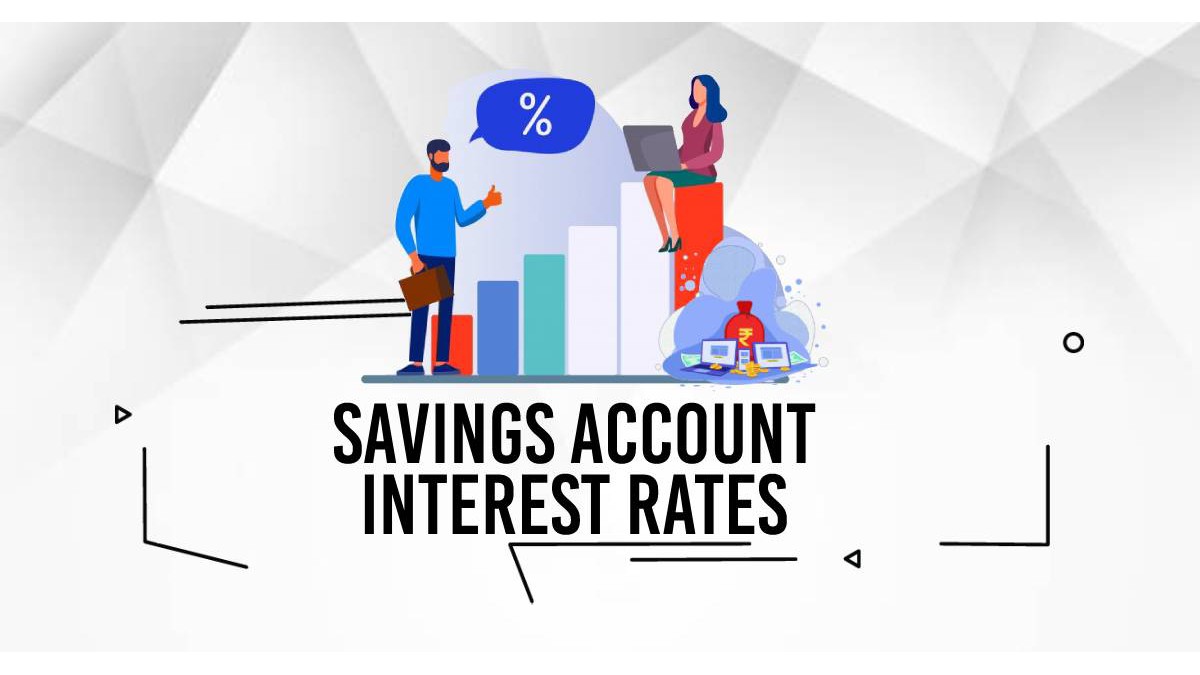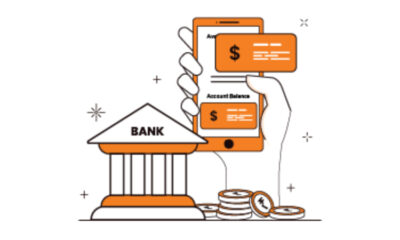Business
5 Tips to Help You Get the Best Interest Rate on Your Savings Account

Online and community banks have seen notable rate increases in the last year or so, even though many large banks have maintained their low savings account rates. Higher rates were associated with the Federal Reserve’s rate hikes in 2022 and 2023, which have remained high since the Fed decided to hold steady on rates in 2024.
A higher yield can help you more effectively offset the losses from rising prices, even though inflation is slowing. High prices have put a strain on consumers’ budgets. This implies that you can generate income with money that would stay the same otherwise.
To help you get the most out of your savings, consider the following tips.
- Look up the rates on savings accounts today
Finding the most competitive annual percentage yield (APY) in the current interest rate environment is the first step in obtaining the best APY. These days, the best savings accounts have an APY of about 5%. The average interest rate in the country is currently 0.58 percent APY and many large banks are still offering much lower rates.
Compare rates offered by several credit unions, online-only banks, and brick-and-mortar banks. Compared to traditional banks, online banks typically pay higher rates.
Although large banks usually don’t pay high-interest rates, they occasionally provide extra benefits for loyalty awards, like when you use other bank services or maintain a high balance across all of your bank accounts.
Another option is local credit unions. These are member-owned, non-profit organizations that share their earnings with their members. Higher rates of savings could result from this.
- Online comparison of high-yield savings accounts
Finding the best APYs can be as simple as conducting a more focused search when comparing high-yield savings accounts. Though not all of these accounts are from online banks, the majority are, so be sure you feel comfortable banking online. The security of online and traditional banks is equal.
Compare accounts by keeping an eye out for features and related costs. Fee schedules and disclosures contain a large amount of pertinent information about the account. Among the things to watch out for are:
- Monthly maintenance fees
- Minimum balance requirements
- Transaction limits and penalties
- Automated savings features
- Options for transferring money in and out of the account
- Previous issues with the account, like data breaches
Take into account the bank’s helpful tools and minimal or nonexistent fees when evaluating it. If a bank offers tools and lower fees that enable you to save more money over time, you might be willing to choose it over one with a slightly lower APY.
- Avoid tiered interest rates
Certain banks provide varying interest rates to patrons who keep larger balances. Premium rates on savings accounts could be available if you deposit, say, at least $10,000 or $25,000.
Nonetheless, there are top-yielding accounts available that offer a uniform yield on all balances. You might lose out on other investment opportunities if you wind up putting all of your money into a savings account to meet the balance requirement. Excess money is often better off invested in the market, aiming for an approximate ten percent annual return. Additionally, your rate may decrease if you need to take out a portion of the money in a tiered-rate savings account.
- Avoid teaser rates
The current best interest rates might not last long. Teaser or promotional rates are attractive interest rates that banks offer to new customers to get them to open a savings account. Within several months, banks can drastically reduce the teaser rate.
To receive the high rate, you might also need to fulfill additional requirements and keep a minimum balance. Always read the fine print that explains the terms of the rate.
- Consider switching banks
In an environment where the best savings rates are nearly ten times the national average, it may be time to move banks if the rates offered by your current savings account are only average or below average. If you choose a well-known but low-paying account, you may miss out on some of the best rates available, which sometimes surpass 5% APY.
Look around for the best savings rates, and if you find one you like, consider moving your funds to the new account.
Conclusion
There are still ways to increase the yield on your savings even with large banks’ low rates. It’s crucial to shop around and compare rates to obtain the best APY, especially with the Federal Reserve raising interest rates and community and online banks providing competitive rates.
Avoid tiered and teaser rates, and if the rate on your current account isn’t high enough, think about moving banks. Take advantage of the current interest rate environment and make your money work harder for you rather than settling for average rates.
-

 Business3 weeks ago
Business3 weeks agoPrakash and Kamal Hinduja: Driving Social and Environmental Change
-
Education4 weeks ago
Fred DuVal: University Leadership as a Critical Resource for Climate Change Research and Life-Saving Solutions
-

 Health3 weeks ago
Health3 weeks agoThe Hinduja Brothers Commitment to Global Health: Empowering Communities Across Borders
-

 Cryptocurrency3 weeks ago
Cryptocurrency3 weeks agoDesigned For The Masses: How Akasha (AK1111) Is Unlocking Crypto For The Next Billion Users
-

 Cryptocurrency4 weeks ago
Cryptocurrency4 weeks agoNexaglobal & Future World Token (FWT): Could This Be the Next Big Crypto Investment of 2025?
-

 Sports4 weeks ago
Sports4 weeks agoWomen’s NCAA Tournament 2025 Sweet 16: Full Schedule, Fixtures, Teams, Bracket, and How to Watch March Madness Basketball Match Live
-

 Startup2 weeks ago
Startup2 weeks agoCost-Saving Strategies Every Small Business Owner Should Know to Boost Efficiency
-

 Startup3 weeks ago
Startup3 weeks agoMatthew Denegre on the Art of Deal Sourcing: Finding the Right Investment Opportunities























